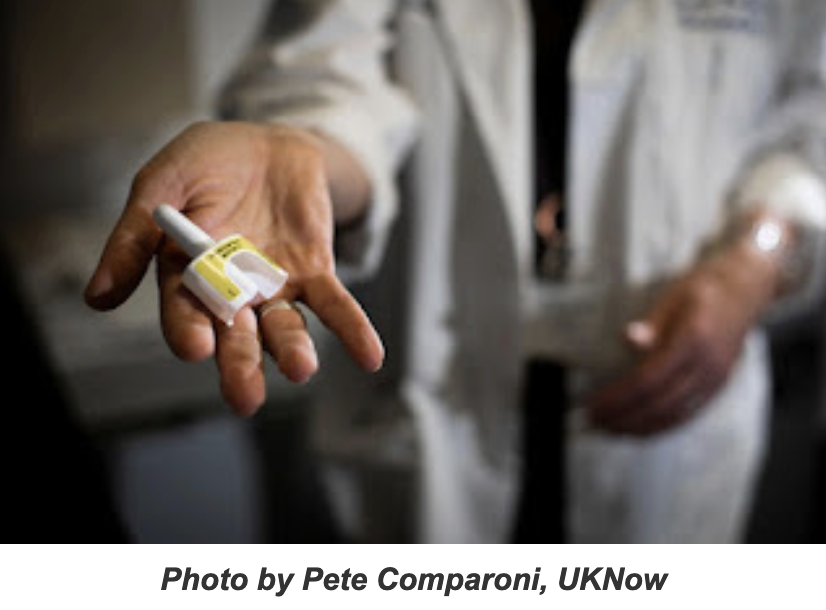Carrying naloxone saves lives; bystanders are present in more than 1/3 of opioid overdoses

Chances are you or someone close to you has been directly impacted by the opioid epidemic, which continues to afflict Kentucky. In 2021, overdose deaths in Kentucky reached an all-time high of 2,250, with 90% involving an opioid.
Because bystanders are present in more than a third of opioid overdoses, hundreds of these deaths could have been prevented with naloxone, a lifesaving medication that is accessible, safe and easy to administer.
What is naloxone?
Naloxone is a medication that can save someone’s life if they are overdosing on opioid medications, heroin, or other drugs (e.g., cocaine, methamphetamine) that are mixed or laced with the opioid fentanyl. Naloxone quickly reverses the effects of opioids and helps restore breathing in someone who is experiencing an overdose.
There are two FDA-approved formulations of naloxone: injectable and prepackaged nasal spray. The nasal spray, which is available as generic naloxone, Narcan® or Kloxxado®, may be easier for loved ones or bystanders without special training to use.
Who should carry naloxone?
People who are at high risk for opioid overdose — including those who take high dose opioid medications and those who use illicit opioids like heroin — should carry naloxone. Families with loved ones who are at risk should also have naloxone nearby. Because opioid overdoses sometimes happen in public places, anyone can carry naloxone and be prepared to respond as a community bystander. If you’re at risk for an opioid overdose, let others know you have naloxone and where it is located.
Where can I get naloxone?
In Kentucky, naloxone is available without a prescription at many pharmacies and through community-based naloxone programs. Many syringe services programs also offer naloxone, along with clean needles and other harm reduction supplies. Soon, naloxone nasal spray will be available over the counter (OTC) at pharmacies and other retail stores that sell OTC products.
To find a location near you where naloxone is available, visit the Kentucky Office of Drug Control Policy website at https://odcp.ky.gov/Stop-Overdoses/Pages/Locations.aspx.
When to use naloxone
Signs of an opioid overdose may include: unconsciousness, very slow or shallow breathing, a limp body and not responding when called or touched.
If you suspect someone is experiencing an opioid overdose, call 911 immediately and give naloxone as quickly as possible. Naloxone is a temporary treatment that can help restore breathing but it’s not a substitute for emergency medical care.
Trish Freeman is a professor in the University of Kentucky College of Pharmacy.